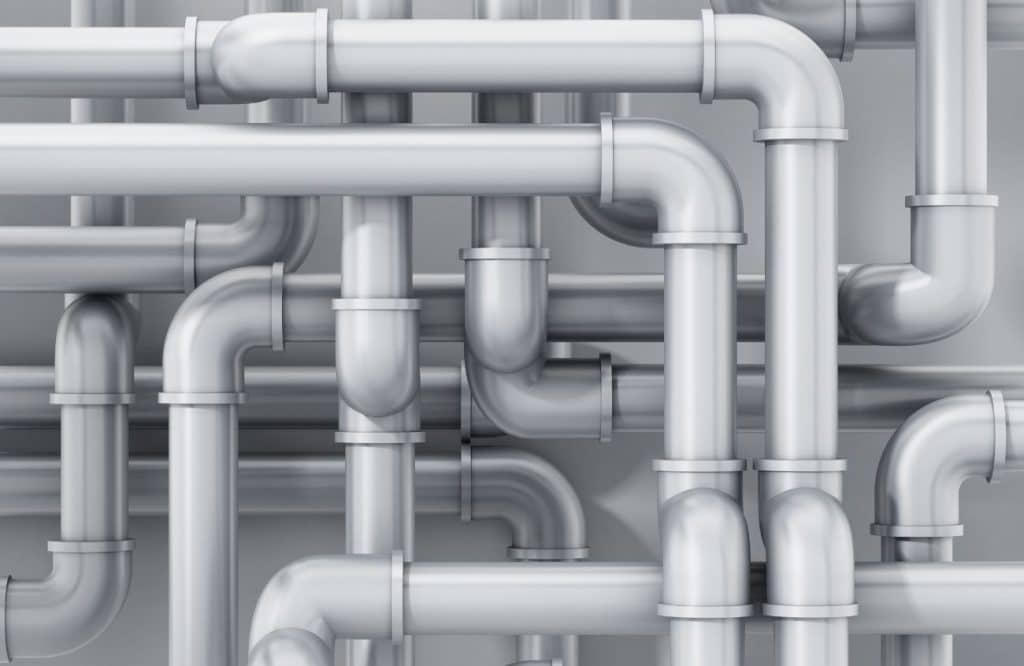Healthcare facilities—whether a sprawling hospital, a surgical center, a dental facility, a long-term care center, or any other patient care facility—face unique risks and challenges at every point of use in their piping systems. From potable water to medical gas, healthcare facilities have widespread use cases for substances that flow through their pipes, not to mention the significant risk of harm from improper equipment or installation.
Depending on the type of healthcare facility you manage, your pipes may take a number of configurations to meet the needs of your patients. The critical points:
- Ensure proper backflow prevention throughout your potable water system.
- Validate system safety by identifying any unprotected cross-connections.
- Protect against Legionella contamination through effective system configuration, elimination of dead-legs, and regular piping surveys and maintenance.
- Comply with relevant regulations, including from your local jurisdiction, standards like NFPA 99 for medical gas, and accrediting bodies like the Joint Commission.
Top 10 Piping Issues Facing Healthcare Facilities & How to Solve Them
Pipes & What They Carry
Healthcare facility piping systems are complex, carrying a variety of gases and fluids that contribute to patient care, cleaning and sterilization, and general operations. But complexity means risk, and the very nature of these systems reinforces the importance of ongoing maintenance for both safety and compliance.
Potable Water Systems
Potable water is for much more than drinking. Healthcare facilities may use it in treatment processes like dialysis systems; in testing, cleaning, and sterilization processes; in domestic hot water systems; and more. With potable water piping systems, you face the risk of backflow from unprotected cross-connections, as well as the threat of bacterial contamination like Legionella and other waterborne pathogens. Good design and ongoing maintenance can protect your system from failure and contamination, while protecting your patients at the same time.
Medical Gas Systems
Medical gas systems include everything from compressed air to critical gasses used in patient care like anesthesia and nitrous oxide, so reliable and continuous operation is essential. Risks can arise from unprotected cross-connections, improper storage, gas leaks, improper labeling, and more. To protect patients and promote efficiency, these systems must be effectively designed and maintained.
Protecting, Tracing, Labeling, & Maintaining, Oh My!
Just like any critical operational system in your healthcare facility, there are myriad elements to keep track of. Start by focusing on a few key steps you can take to comply with regulations and accrediting bodies, while protecting your patients and your facility.
- System configuration, along with temperature regulation, ensures the environment in your pipes is not conducive to bacteria growth. Effective system design (combined with regular inspections as your system undergoes changes) reduces and eliminates areas prone to stagnation and scale, sediment, and biofilm build up.
- On-site surveys provide a clear picture of the piping systems and help to identify high-risk areas. Surveys that trace your pipes to every point of use are typically part of a larger water management program that includes the development of comprehensive piping schematics to improve maintenance and system updates.
- Backflow prevention plays a critical role in any piping system. Wherever cross-connections exist, proper backflow prevention must be employed. From appropriate air gaps at sinks or tubs to reduced-pressure backflow preventers at high-hazard connections, your facility should be well equipped to prevent both backpressure and backsiphonage.
- System monitoring supports efforts to avoid contamination and maintain continuity of service. From water sampling and testing to alarms on medical gas systems that indicate problems, monitoring for proper operation protects patients from contamination and system failure.
- Pipe labeling, in compliance with NFPA 99 and state plumbing codes, supports maintenance efforts and helps to avoid accidental pipe shut-off or tampering.
Stay up to date on surveys, stay current on your schematics and pipe labeling, and ensure proper backflow prevention and system design, especially as your facility’s needs and piping systems evolve. Ongoing maintenance should be just that: ongoing. Your facility’s operations and the patients you care for depend on it.
Ready to learn more about how HydroCorp can support healthcare facilities like yours with on-site surveys, piping schematic development, and comprehensive water management programs?


